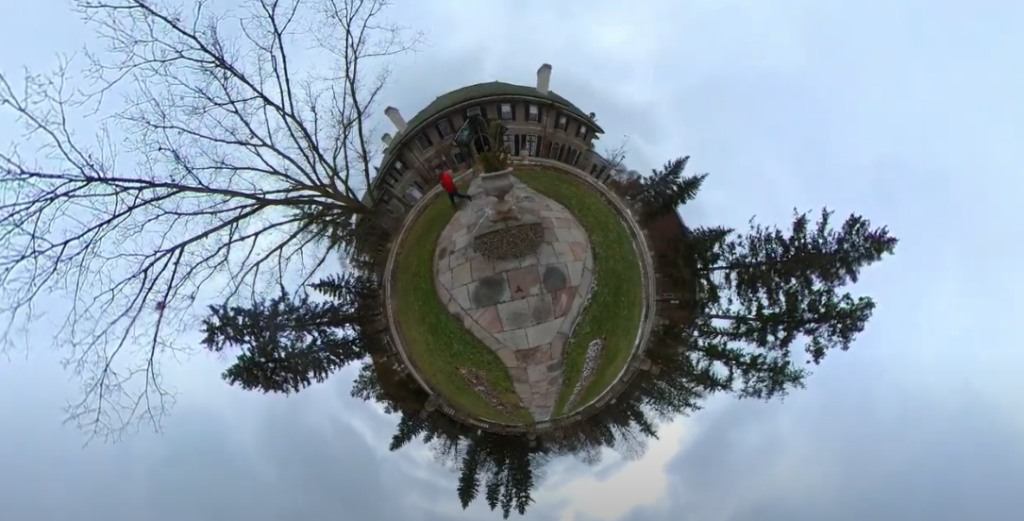
By Elaine Smith
Raiman Dilag, director of information technology services (ITS) at York University’s Glendon College, and his team are working to ensure their students have access to the most current technology to enhance their storytelling capabilities.
They will make this possible through an Academic Innovation Fund grant that allowed them to create a new eight-week extracurricular course – XR Storytelling in Extended Reality / XR Accroche Narrative en Réalité Étendue – that will provide interested Glendon students and faculty, with an introduction to virtual reality (VR), augmented reality (AR), 360-degree cameras, podcasting and 3D printing. The course is not for credit, but those who complete it will earn a microcredential and a digital badge that can be affixed to their resumes and LinkedIn profiles.

“While it’s expected for STEM students to be exposed to technological tools, at Glendon, we are deeply rooted in the liberal arts tradition,” Dilag said. “I saw the opportunity to complement resources currently in place, and enhance our students’ access to these and other new tools. Our students have stories to tell, and they benefit from sharing them using new media.”
For those on the outside looking in, the idea of using these tools can be confusing and/or daunting. VR and its sleek headsets can immerse users in another space, such as the Notre-Dame Cathedral in Paris before and after the fire. Fans of Pokémon Go know that AR allows users to employ a device to interact digitally with the real world, bringing images to life. 360-degree photography brings the viewer into the space, letting them experience that moment from all of the photographer’s points of view. Podcasts stream on digital devices and are excellent audio/video tools for storytelling, while 3D printing enables the creation, and customization, of 3D objects crafted in one’s imagination or modified from previous designs.
Each of these technologies, independently or in combination, are valuable for storytelling in a digital era.
The eight-week course created by the ITS team will familiarize students with these key tools and require them to work on a group project to show their facility with one or more of them. The project will also reinforce teamwork skills, and in true Glendon nature, is conducted in English or French by the bilingual XR technology co-ordinator.
“I’d like students to think about the stories they want to tell,” said Dilag. “These are just tools; however, a course like this can open doors, because opportunities following graduation may be influenced by things beyond academics, such as exposure to any or all of these XR technologies.
“We’re all about the student experience, recruitment and retention. If this course helps them graduate more career-ready, it’s a great way for us to add value to their university, and post-graduation, experience.”
The in-person course is open to all Glendon students and will be offered during both the Fall and Winter terms. Dilag hopes the success of the course will lead to expansion for all York students.
The team has been planning the course since February: designing the curriculum, writing the proposal, purchasing necessary equipment and making the space attractive. The course will be conducted by the XR technology co-ordinator with oversight from Dilag.
“Let’s get technology in the hands of this dynamic generation and see what they can do,” Dilag said. “I think they’ll impress us.”
He is proud of his team’s work and reminds the larger community that the ITS department “is about more than resetting passwords," he said. "We aim to humanize technology, and to use it to enable the telling of great stories.”
XR Storytelling in Extended Reality / XR Accroche Narrative en Réalité Étendue begins the week of Oct. 16. Glendon students can register online.
Faculty who may be interested in the course can contact xrglendon@glendon.yorku.ca to discuss their needs and learning objectives.
